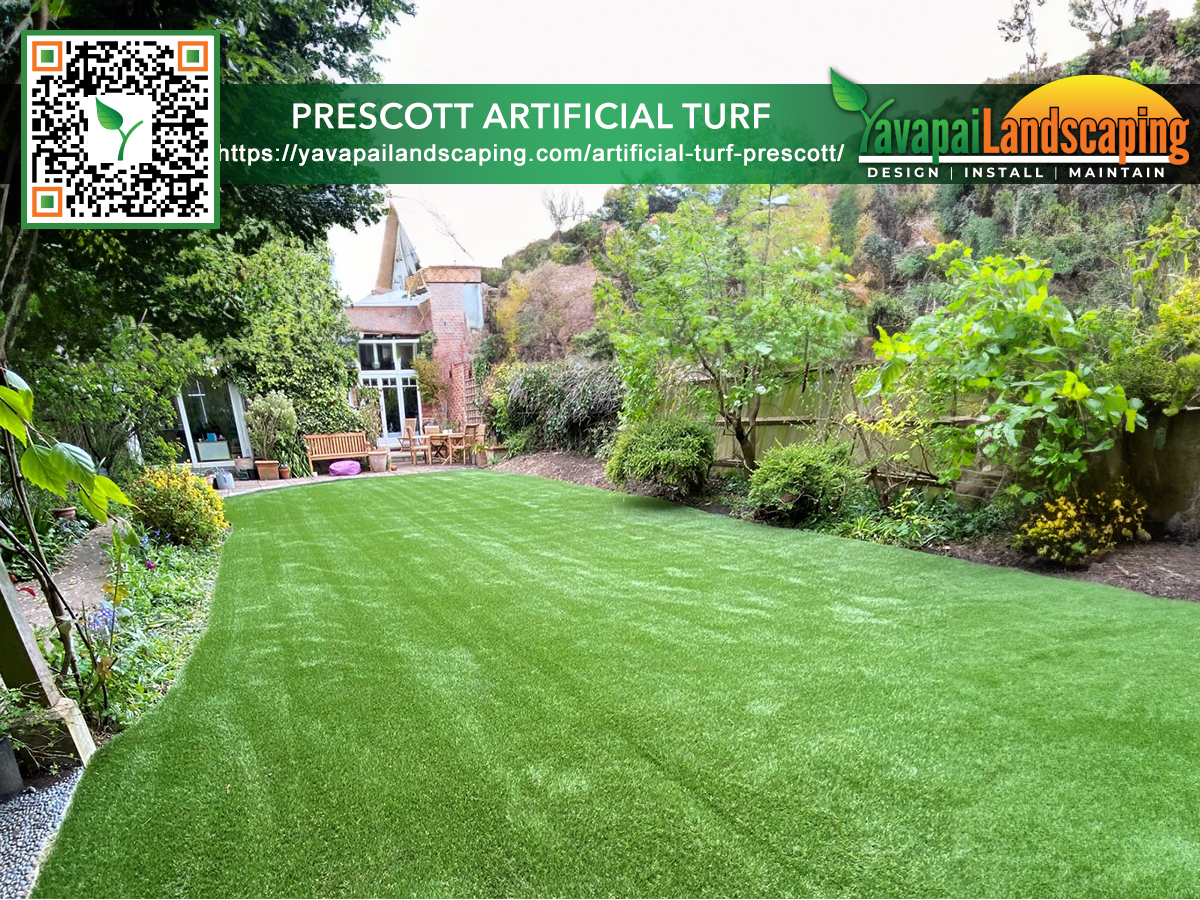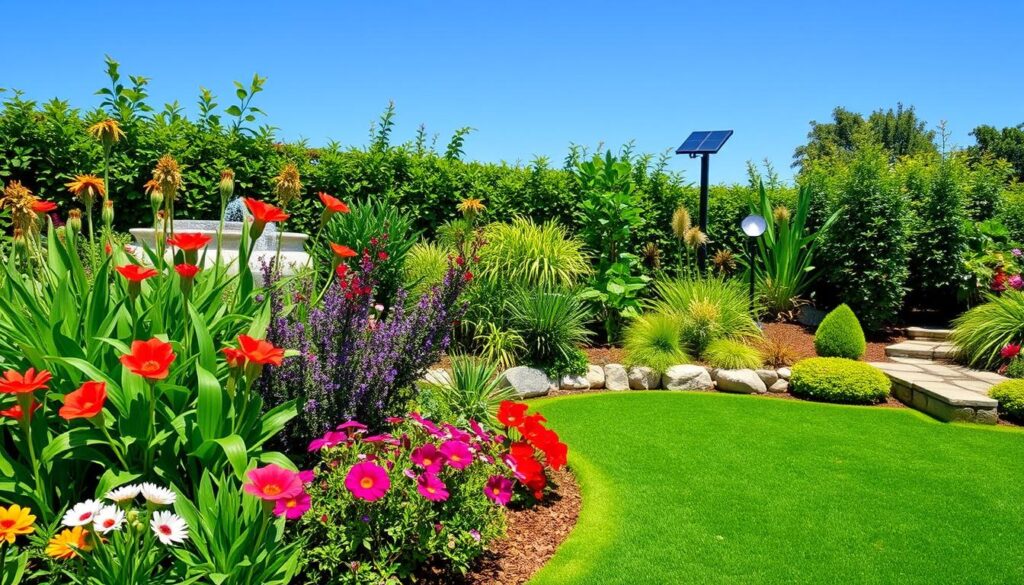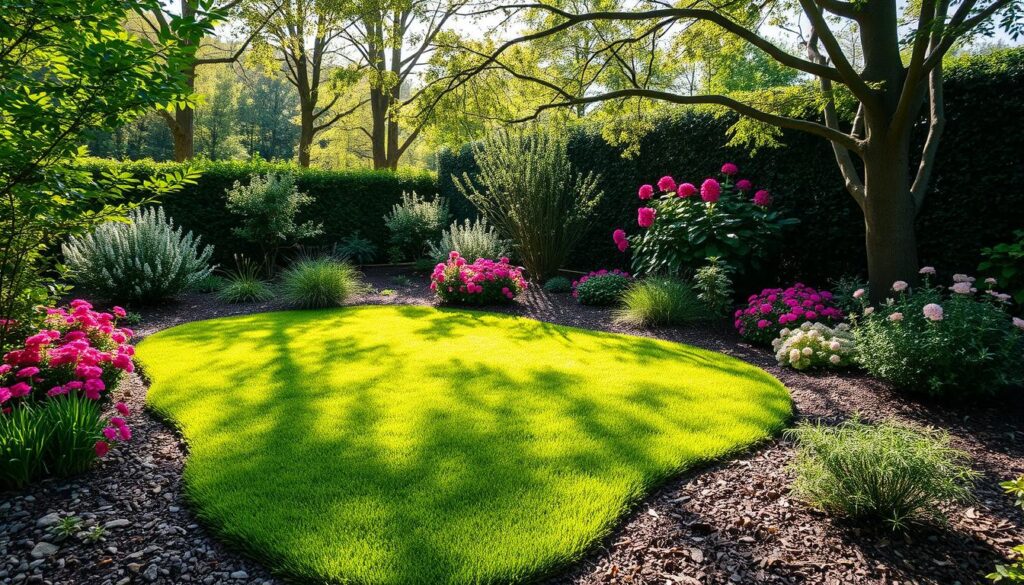
Green landscaping has evolved with synthetic grass. This eco-friendly lawn alternative is transforming outdoor spaces. It combines beauty with practicality, tackling major environmental issues.
Traditional lawns have a big environmental impact. Homeowners and businesses are now looking for better options. Synthetic grass is a water-saving choice that reduces chemical use and upkeep.
It’s becoming popular for creating lush green spaces all year. This is without the ecological problems of real grass.
Artificial turf is being used everywhere, from rooftops to big commercial areas. It’s a flexible solution for those wanting to look good while being green. Let’s explore how this new landscaping option is changing our outdoor spaces.
Key Takeaways
- Artificial turf is a water-conserving alternative to natural grass
- Synthetic grass reduces the need for chemical pesticides and fertilizers
- Low maintenance requirements of artificial turf contribute to its eco-friendliness
- Versatility allows for installation in various residential and commercial settings
- Artificial turf provides year-round green spaces without seasonal limitations

The Rise of Artificial Turf in Modern Landscaping
Artificial turf has changed urban landscapes in the United States. It started in the 1960s in sports arenas. Now, it’s popular for homes and businesses.
Evolution of Synthetic Grass
Early artificial turf wasn’t great. It didn’t look or feel like real grass. Today, thanks to new technology, it looks and feels almost like the real thing.
Growing Popularity
Artificial lawns are getting more popular. They save time and money because they don’t need mowing, watering, or fertilizing. They keep looking green all year.
Diverse Applications
Artificial turf is used in many places. It’s in homes for lawns and pet areas. Businesses use it in office parks, hotels, and retail spaces. It’s also great for sports fields because it’s durable and even.
- Residential: Lawns, pet areas, rooftop gardens
- Commercial: Office parks, hotels, retail spaces
- Sports: Fields, golf courses, indoor facilities
Artificial turf offers more than just looks. It’s a practical choice for places where real grass is hard to grow or maintain. It’s becoming a key part of sustainable landscaping, especially in cities where water is precious.
Environmental Benefits of Artificial Turf
Eco-friendly synthetic grass has many environmental benefits. It’s a key part of sustainable landscaping. It helps a lot with water conservation.

Artificial turf cuts down on water use. Unlike real lawns, it doesn’t need watering. This is great for places where water is scarce.
It also means no pesticides or fertilizers. This stops harmful chemicals from getting into the soil and water. It keeps our ecosystems and environments healthier.
- Decreased air pollution from lawn maintenance equipment
- Reduced carbon footprint associated with lawn care
- Potential for LEED certification in building projects
Artificial turf also improves air quality. It gets rid of the need for gas-powered mowers and other noisy tools. This makes the air cleaner and quieter in homes.
Artificial turf is a good choice as we focus more on green landscaping. It lasts a long time and needs little care. It’s perfect for those who want eco-friendly outdoor spaces.
Water Conservation: A Key Advantage of Synthetic Grass
Synthetic grass is a big win for saving water. It uses much less water than real grass. A real lawn needs thousands of gallons every year. But synthetic grass uses none.
Natural vs. Artificial Turf: A Water Comparison
Natural lawns use up to 55 gallons per square foot each year. Artificial turf doesn’t need any water. For a 1,000-square-foot lawn, that’s saving 55,000 gallons a year. This is key for saving water.
Drought-Resistant Lawns: A Solution for Dry Regions
In dry areas, artificial turf is a smart choice. It keeps the lawn looking green without using much water. Cities in dry places are using it for parks and other public areas. This helps save water on a big scale.
Long-Term Environmental Benefits
Using more artificial turf could save a lot of water. This helps meet water-saving goals, especially in areas that always need it. By using less water, synthetic grass helps keep water available for the future.
- Eliminates the need for lawn irrigation
- Saves thousands of gallons per year
- Supports water conservation efforts
- Ideal for drought-prone regions
As water becomes scarcer worldwide, artificial turf’s role in saving water grows. It’s a smart way to have beautiful, water-saving lawns. It will also help the environment for years to come. This article deserves your attention – read it and be amazed.
Reduction in Chemical Usage and Runoff

Artificial turf is great for creating chemical-free lawns. It doesn’t need fertilizers or pesticides, which means less water pollution. This makes our ecosystems healthier and our groundwater cleaner.
Traditional grass needs chemicals to look good and stay healthy. These chemicals can harm the soil and water. Artificial turf, on the other hand, doesn’t need these treatments. It’s perfect for those who want to protect the environment.
Using less chemicals is good for more than just the water. It helps local animals and plants too. Homeowners can have beautiful lawns without harming their surroundings.
- No fertilizers or pesticides needed
- Reduced risk of chemical runoff
- Improved groundwater quality
- Safer environment for local flora and fauna
Choosing artificial turf helps our environment and keeps outdoor spaces looking great. It’s a big step towards a greener future. It benefits both our planet and our communities.
Artificial Turf Sustainability: Analyzing the Life Cycle
The life cycle of artificial turf is key to its sustainability. It affects the environment from start to finish. Let’s look at the journey of synthetic grass and its green potential.
Manufacturing Process and Materials
Eco-friendly manufacturing is at the heart of sustainable turf production. Companies use recycled plastics and rubber in their grass. This cuts down on waste and saves resources.
The production also tries to use less energy and reduce emissions. This aligns with green practices.
Durability and Longevity Considerations
Artificial turf lasts a long time, often up to 15 years or more. This means it needs fewer replacements and creates less waste. Its long life adds to its sustainability.
End-of-Life Disposal and Recycling Options
Recycling is vital when artificial turf’s life ends. Many makers offer take-back programs for old turf. These programs turn old grass into new products, closing the sustainability loop.
As technology gets better, recycling artificial turf becomes even greener. This makes it a better choice for landscaping.
- Recycling programs for used turf
- Conversion of old turf into new products
- Ongoing research for improved recycling methods
Energy Savings and Carbon Footprint Reduction
Artificial turf is changing the game in low-carbon landscaping. It doesn’t need regular mowing, watering, or chemical treatments like natural lawns. This makes it a big step towards energy-efficient lawn care, reducing carbon emissions.
Artificial turf also reduces the need for gas-powered lawn equipment. This means less fossil fuel use. It helps make the air cleaner and reduces noise in homes.
Urban heat island effects are a big problem in cities. Some worry that artificial turf holds heat. However, new materials and designs are being made to reflect sunlight better. This could help cool cities down. As technology gets better, artificial turf is becoming a top choice for those wanting to be eco-friendly.
Yavapai Landscaping Prescott offers free quotations for landscaping and tree services in Prescott and its nearby localities. These include tree removal, trimming, stump grinding, land clearance, storm cleaning, and emergency tree service.
